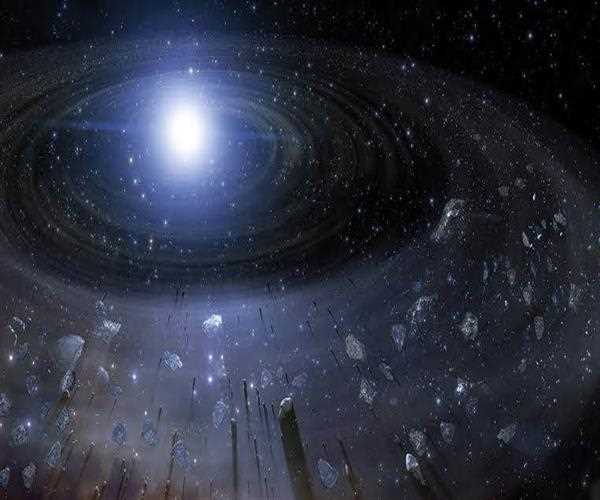The timing of the earliest planetesimal formation has an impact on the mechanism of planetary accretion
as well as the evolution of the geophysics and composition of the planets.
Astronomical investigations of circumstellar discs and Solar System geochronology show planetesimal formation during molecular cloud collapse far earlier than previously assumed.
A recent study from the
University of Cambridge has provided clear observational proof of planetesimal generation from white dwarf planetary systems.
Planet formation in our young Solar System began much earlier than previously believed,
according to a team of astronomers. The discoveries alter how we think about the formation of planetary systems, such as the Solar System, and they may provide an important astronomical answer.
Astronomers investigated the components of planet formation by examining the atmospheres of white dwarf stars to find the solution to this question. Because of their tenuous atmospheres, which resemble celestial cemeteries, these white dwarfs make for incredible labs.
In most cases, telescopes are unable to see inside planets. However, there are some white dwarfs that are considered to be 'polluted' systems because their typically clean atmospheres contain heavy metals like calcium, magnesium, and iron.
These substances must have come from tiny asteroids or other remnants from planet formation that struck the white dwarfs and ignited in their atmospheres. As a result, spectroscopic studies of tainted white dwarfs can be used to study the interiors of such fractured asteroids, giving astronomers a thorough knowledge of the circumstances.
The researchers looked at spectroscopic data from 200 polluted white dwarfs in nearby galaxies. They discovered that only melting of many of the initial asteroids, which caused heavy iron to sink to the core and lighter metals to float on the surface, could account for the mixing of elements in the atmospheres of these white dwarfs. The differentiation process produced the iron-rich core of the Earth. According to the findings, the early-formation scenario is probably accurate, which means
Jupiter and Saturn had plenty of time to expand to their present sizes.



